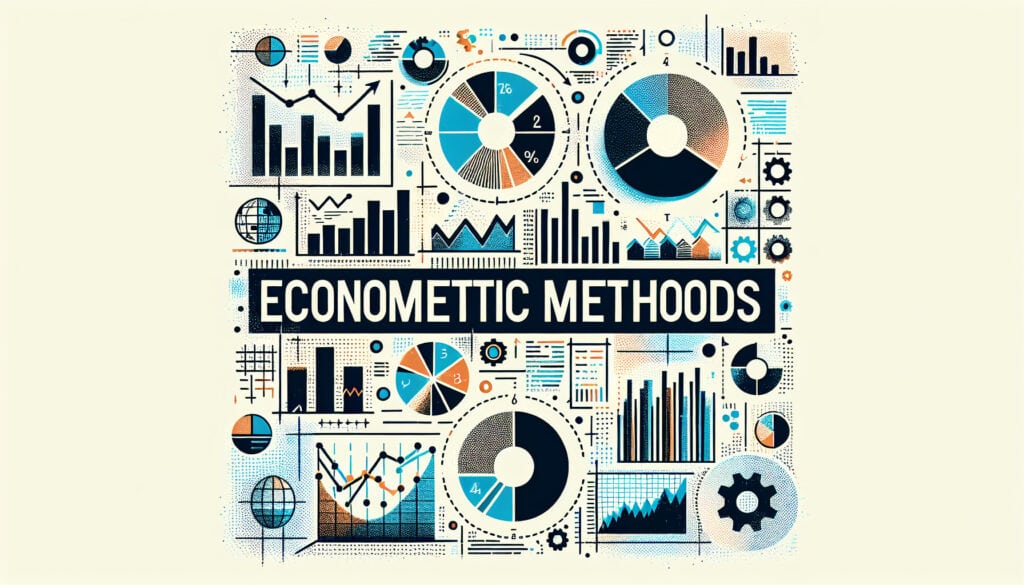To apply statistical methods to economic data to give empirical content to economic relations.
- Metodologías: Ergonomía
Métodos econométricos

Métodos econométricos
- Asignación de costes, Estudios de mercado, Algoritmos de mantenimiento predictivo, Desarrollo de productos, Precios de los productos, Gestión de calidad, Análisis estadístico, Control estadístico de procesos (CEP)
Objetivo:
Cómo se utiliza:
- Used to model and analyze the economic aspects of product design, manufacturing, and marketing, such as demand forecasting, cost analysis, and pricing strategies. By using regression analysis and other statistical techniques, businesses can understand the impact of various factors on product success.
Ventajas
- Provides a quantitative basis for decision-making; Helps in forecasting and understanding market dynamics.
Contras
- Requires significant expertise in statistics and economics; Models can be complex and may not perfectly capture real-world nuances.
Categorías:
- Economía, Gestión de proyectos
Ideal para:
- Analyzing large datasets to forecast market trends and inform strategic product decisions.
Econometric methods find extensive application in various sectors, particularly where product design intersects with economic theories and market dynamics. For instance, in consumer electronics, businesses leverage these techniques to analyze how changes in price points or features impact consumer demand, allowing them to optimize product offerings before market launch. The methodology is crucial during the pre-launch phase where businesses aim to predict customer responses through historical data analysis. Participants typically include data analysts, marketing teams, and product managers who collaborate to ensure that their findings are integrated into the decision-making process. Industries such as automotive, healthcare, and retail also benefit significantly from econometric analyses, as they allow professionals to evaluate the return on investment for different product features or marketing campaigns. Companies incorporating econometric methods into their innovation cycles can refine pricing strategies based on demand elasticity, which aids in maximizing profitability. Furthermore, forecasting and market trend analysis informed by these methodologies cater to continuous improvement, enabling organizations to stay competitive in rapidly shifting markets. The ability to quantify relationships between various factors helps businesses align their product development strategies with consumer expectations, thus enhancing the likelihood of market success.
Pasos clave de esta metodología
- Define the economic aspects relevant to product design, manufacturing, and marketing.
- Select appropriate econometric models based on research questions and data properties.
- Utilize regression analysis to establish relationships between variables impacting product success.
- Conduct hypothesis testing to evaluate the significance of economic factors.
- Use diagnostic tests to check model assumptions and validate model fit.
- Implement simulations to predict outcomes under different scenarios based on the model.
- Interpret results to inform pricing strategies and demand forecasting.
- Regularly update models with new data to refine predictions and strategies.
Consejos profesionales
- Utilize time-series analysis to discern seasonal patterns in product demand, enhancing the accuracy of forecasting models.
- Incorporate interaction terms in regression models to evaluate how combinations of factors influence product performance more significantly than individual factors alone.
- Apply cluster analysis to segment customer data into homogenous groups, allowing for more targeted marketing strategies and pricing models.
Leer y comparar varias metodologías, recomendamos el
> Amplio repositorio de metodologías <
junto con otras más de 400 metodologías.
Sus comentarios sobre esta metodología o información adicional son bienvenidos en la dirección sección de comentarios ↓ , así como cualquier idea o enlace relacionado con la ingeniería.
Contexto histórico
1994
1997
1999-05-01
2000
2002
2013
1992
1996
1998
2000
2000
2003
2013-09-24
(si se desconoce la fecha o no es relevante, por ejemplo "mecánica de fluidos", se ofrece una estimación redondeada de su notable aparición)













Publicaciones relacionadas
Gestión de operaciones de fabricación (MOM)
Sistema de Ejecución de Fabricación (MES)
Plan de control de la fabricación
Pruebas manuales
Tablas de evaluación de la manipulación manual (MAC)
ManTRA (Herramienta de evaluación de riesgos en las tareas manuales)